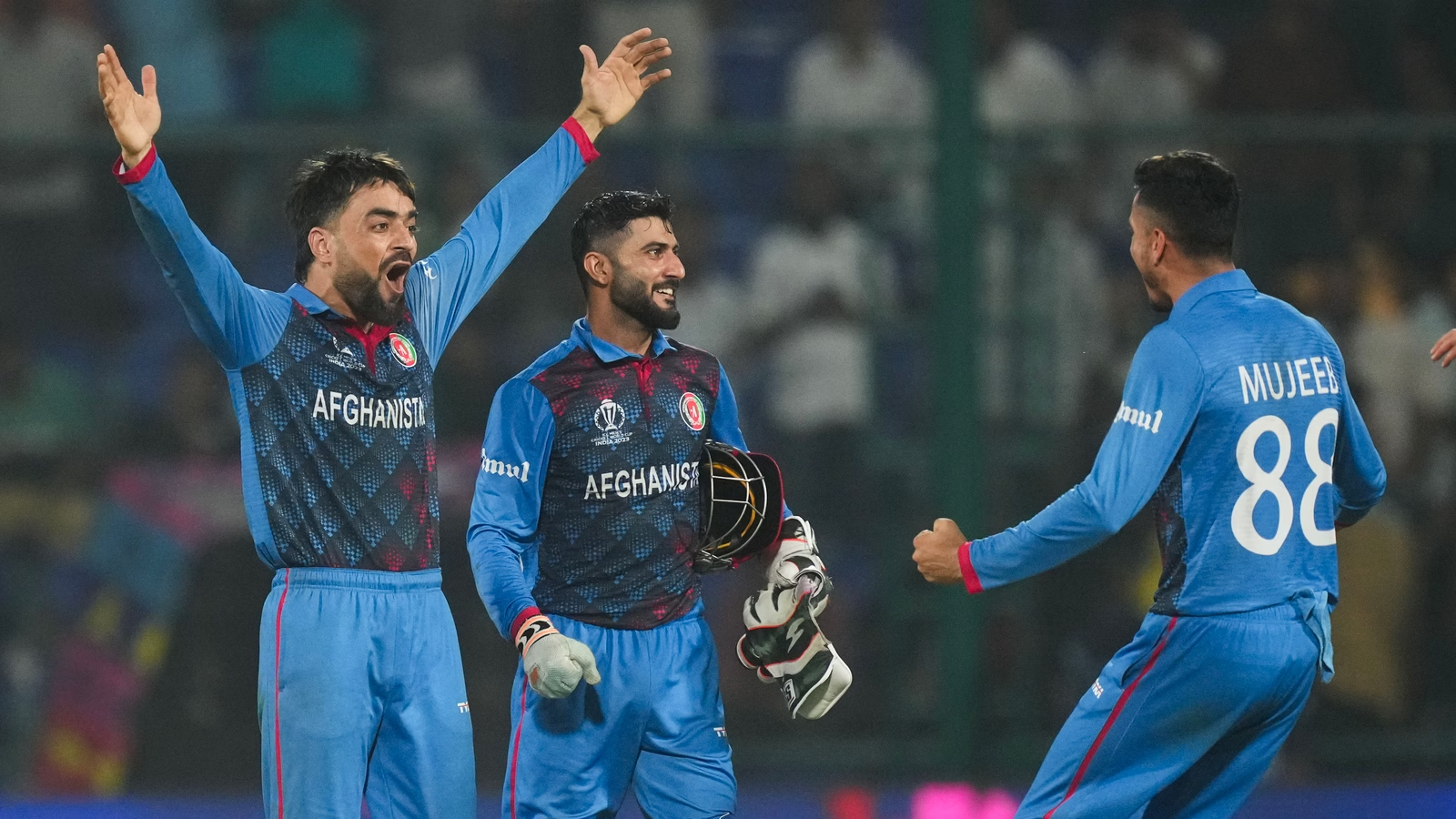Shock Afghan Win Adds Spice To World Cup Flavour
It was one of the greatest upsets in World Cup history

David getting the better of Goliath is always news and when the feat is performed on the international stage its enormity is multiplied several times. Afghanistan, said to be ‘absolute no-hopers’, stunned reigning champions England in the World Cup on Sunday.
Simply put it was one of the greatest upsets in World Cup history. There have been some shocking results in the 48 years of the competition but this will have to rank somewhere near the top.
It was their first win against England in six meetings across formats and only their second victory in 18 matches in the World Cup, the only other one being notched up against Scotland in 2015.
In a way this was just the result the 13th edition of the World Cup required. About a third of the way through the 45-match league stage the tournament was proceeding along predictable even boring lines.
The fancied teams were winning their games and occupying the top positions and the lesser fancied sides reckoned to be just making up the numbers languished in the bottom half of the points table. About the only thing not going according to plan has been Australia’s shaky start.
Frankly, they have not at all performed like five-time world champions but then one cannot really write off any Aussie side. A strong surge in the remaining games could still see them fighting for a place in the last four.
That in short is what the format in which all ten contestants play each other is all about. A team that starts poorly has enough opportunities to come back and a team that makes a strong start could well implode as the tournament unfolds. Pakistan in 1992 is the classic example.
At the halfway mark they were all but out of the competition with just one win in four matches. They got a lucky break when their game against England ended in a no-result after Pakistan were bowled out for 74.
That one point they obtained came in handy for they won their last three matches and squeaked past Australia and West Indies into the semifinal and then as the cricketing world is aware created history. Australia too wrote a rather similar script in 1999 when they were down and virtually out in the initial stages of the competition, then went on to win seven matches in a row to take the title.
Sunday’s result could well throw a spanner in the works not just in the plans of the fancied teams but the tournament itself. For one thing Afghanistan can believe that they have it in themselves to notch up another similar win against a fancied side.
Second they could provide the inspiration for other less fancied sides to pull off an upset or two. The favourite teams too will now be wary of any opposition and this could provide the edge and the added interest the tournament needs to make it more stimulating and that much more competitive.
The early front runners would appear to be India, New Zealand and South Africa. Living up to the tag of pre-tournament favourites the three teams have been the most impressive and even though there is a long way to go it would be a major surprise if all the three do not make it to the semifinals.
The other side was projected as one among Pakistan, England and Australia. But Pakistan’s really bad loss to India, Australia’s indifferent start and England’s shock loss to Afghanistan has put their chances of making the knock-out round in some doubt. The opportunity is there for one of the lesser fancied sides to make the grade but then they will have to perform the Goliath act more than once.
Away from the actual on field action the organisers of the current competition also have the added responsibility of showing that ODIs are still relevant in the face of the growing interest in T-20 cricket. One important factor in this regard is the crowd response and overall the interest has been rather lukewarm.
Predictably, matches involving India have drawn a full house including a near capacity 130.000 when India played Pakistan at Ahmedabad on Saturday. Crowd response in other matches involving the heavyweights have been sizable while games involving the lightweights have predictably drawn a disinterested response.
But the tournament has received solid backing from the sponsors, advertisers and the media so there is little doubt that ODIs are still relevant at least when it comes to the World Cup. This argument may be valid when it involves bilateral contests but not as far as the mega event is concerned.
One is sure that the crowd response will be much greater as the competition gathers momentum and the fight for the semifinals gains steam especially if there are more surprises in store like what happened on Sunday.



